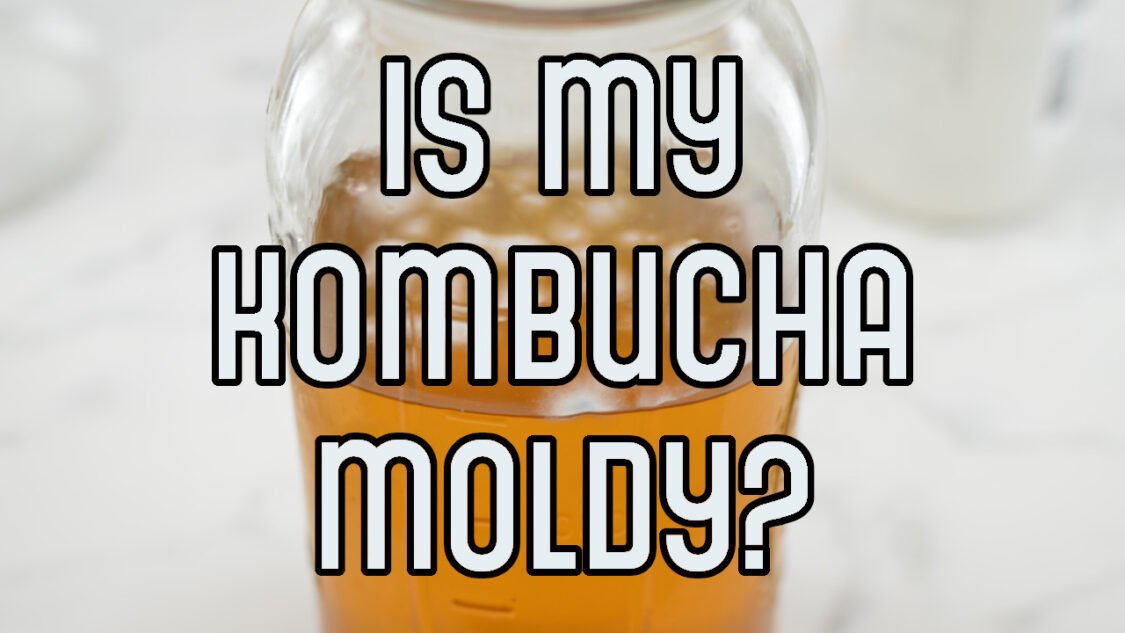How to Grow a SCOBY
Before making kombucha you will need a SCOBY. You can buy one or used this guide to grow your own!
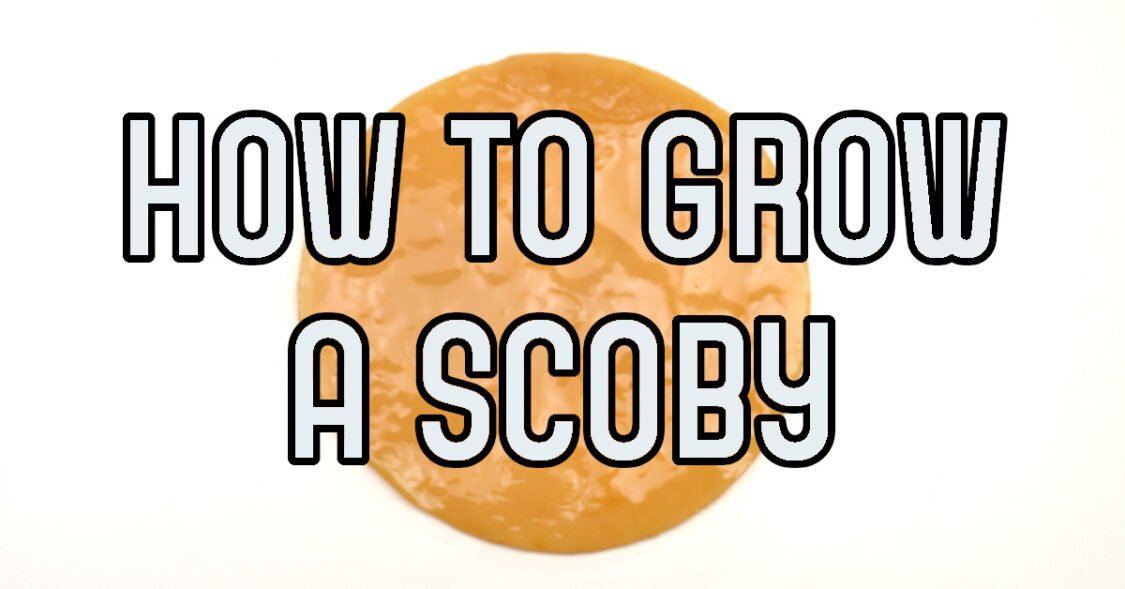
Growing a new SCOBY is easy and rewarding. You only need a few common ingredients and the same equipment you use to make kombucha
What is A SCOBY?
“SCOBY” stands for Symbiotic Culture Of Bacteria and Yeast.
It is a a living home for the multiple strains of good yeast and bacteria that transform sweetened tea into tasty kombucha. These yeast and bacteria are also found in the starter liquid; however the SCOBY provides additional benefits to the fermenting kombucha:
- A floating home for the colonies of bacteria and yeast – you will see often see strands of yeast hanging below the SCOBY in your fermentor
- A barrier to protect the fermenting kombucha from too much oxygen in the air and dust, insects, etc.
Read more about the SCOBY in what is a kombucha SCOBY and what is a SCOBY made of.
Let's Grow a SCOBY for kombucha
It is possible to make kombucha with healthy starter liquid and sweet-tea; however a SCOBY can lead to stronger and more efficient fermentations. Read more on this topic at do I need a SCOBY.
Supplies to Grow a SCOBY
- Large pot for boiling water
- Large glass or ceramic container (no plastic or metal)
- Long-handled spoon
- Tightly woven cloth (clean tea towels, coffee filters, paper towels, napkins, cheese cloth)
- Rubberbands
Ingredients to Grow a SCOBY
- 7 cups (1.6L) water
- 4 bags (7 g) black tea (not decaf) (see my tips on the best teas for kombucha)
- 1/2 cup (100 g) white sugar 1 cup (240 mL)
- 1 cup (200 g) unflavored, unpasteurized kombucha (homemade or store-bought)
How to Grow a SCOBY
1. Make Sweet Tea: Bring water to a boil. Remove from heat and dissolve sugar into it. Add the tea bags and allow them to steep for at least 20 minutes (or until tea has cooled).
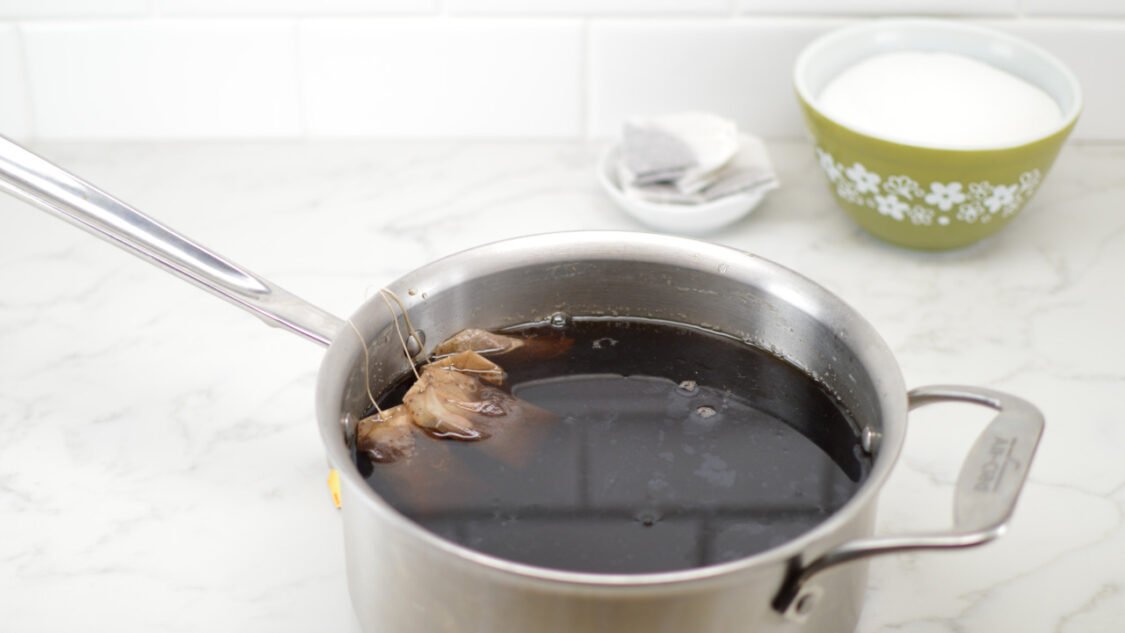
2. Cool Tea to Room Temperature: Wait for sweet-tea mixture to cool to room temperature. This process can be sped up by boiling just 2 cups of water and making a concentrated sweet tea by dissolving the sugar, and steeping the tea in that water for 20 minutes. Then add the remaining 5 cups of cold water to this the concentrated tea, which will rapidly cool the mixture close to room temperature. Ensure the sweet tea mixture is totally cooled since the kombucha SCOBY is sensitive to temperature.
3. Add Starter Kombucha: Pour the cooled sweet tea mixture into your clean fermentation jar. Add the starter kombucha. It is helpful to swirling the bottle a few times while pouring to ensure the kombucha cultures which settle into a sediment sediment at the bottom of the bottle are added to the fermenter.
Adding the sediment will help ensure a vigorous vigorous start to your kombucha fermentation since it contains yeast which starts the fermentation process.
To learn more about starter kombucha and where to get it, check out unflavored kombucha for starter
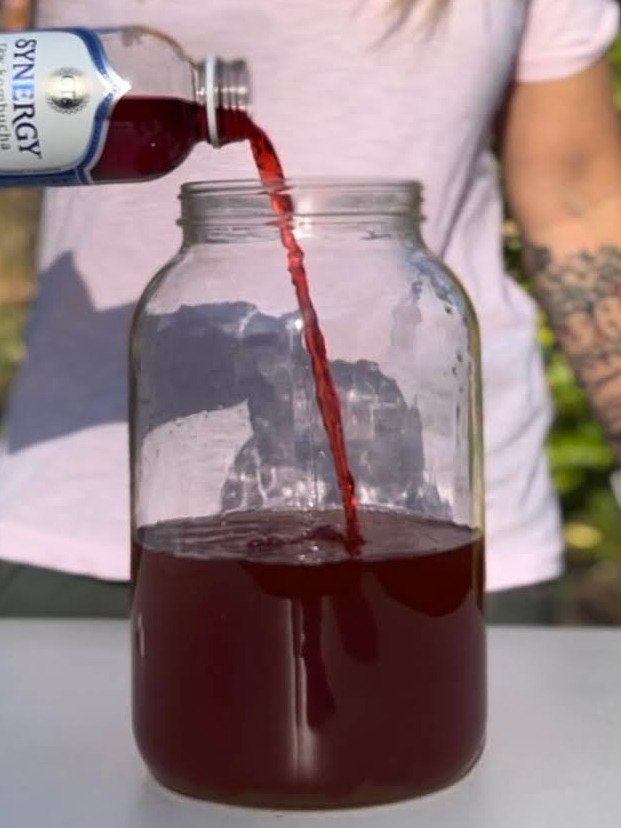
4. Cover: Cover the opening of the fermentor with layers of the tightly woven cloth to keep pests such as dust, bugs and unwanted microbes. Use a rubber band or twine around the neck to keep it in place.
5. Ferment: Place fermentor in a still area out of direct sunlight that is room temperature (70-75F / 21-24C) for 2 to 4 weeks, until a SCOBY about ¼ inch (½ cm) thick has formed. At first The SCOBY will look blotchy and spottedand later form into a smooth solid pellicle.
Stages of SCOBY Formation
Step 1 – The SCOBY starts out as a set of random, splotchy small floaties on the surface of the fermenting liquid.
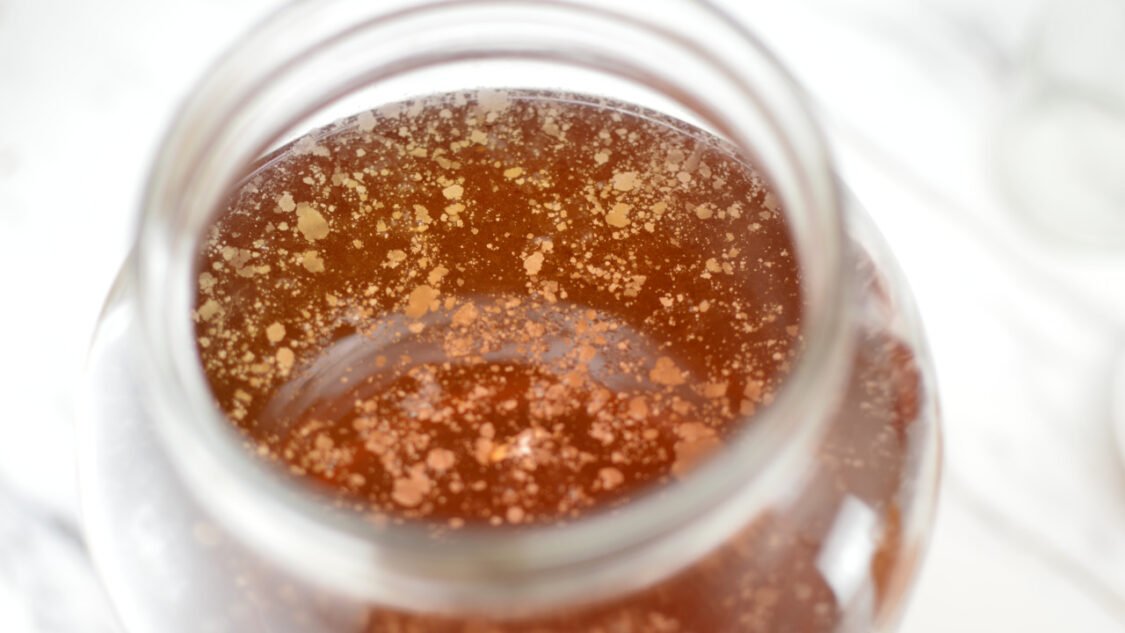
Step 2 – The floaties start to clump together and for larger, blotchy masses. Don’t despair, this is not mold! See is my kombucha moldy? for tips on identifying mold.
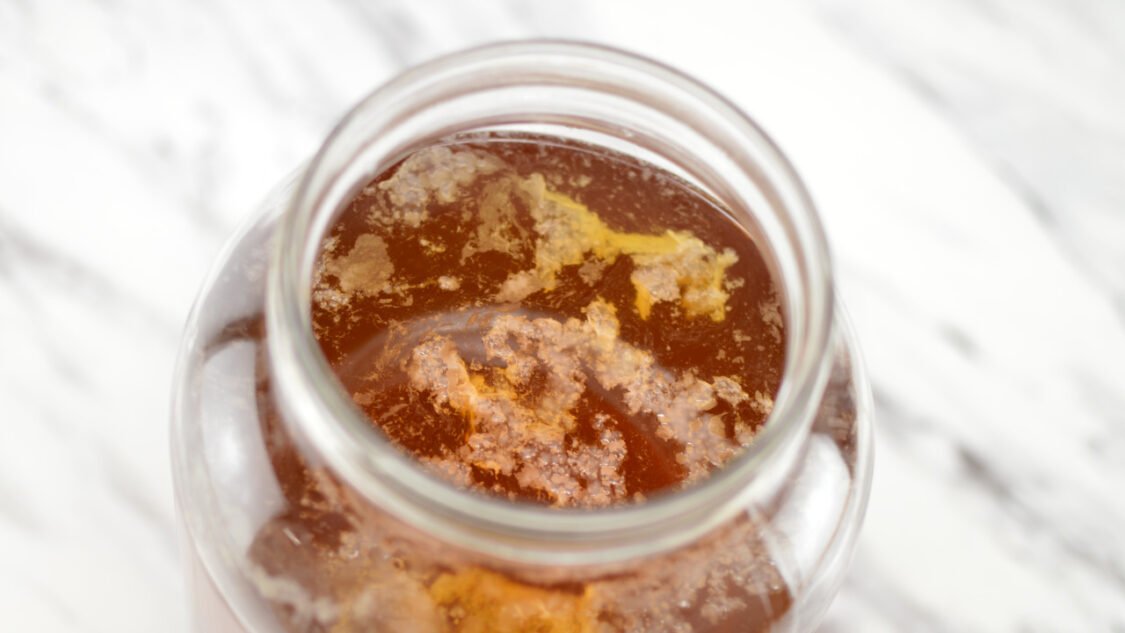
Step 3 – The masses continue to grow and join, forming a single blob. They also take on the characteristic “waxy” look of a kombucha SCOBY. At this point the SCOBY is almost developed!

Step 4 – The SCOBY is now fully covering the surface of the liquid and the “waxy” look of a kombucha SCOBY is the dominant characteristic. SUCCESS!
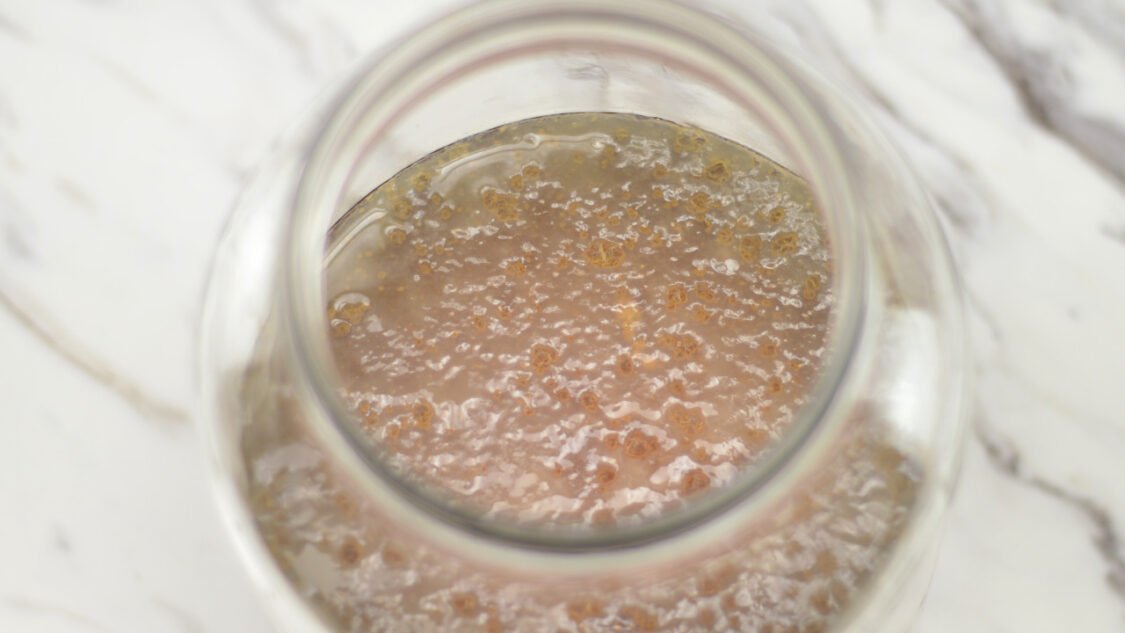
TIps FOr Making a Kombucha SCOBY
Only black tea: The SCOBY grows more vigorously with black tea and not as well with green or herbal/fruity teas. Once your SCOBY is larger you can use green or other teas tea, but for now stick with black.
No decaf: The SCOBY will not grow as well if decaf tea is used. After a few batches with your SCOBY you can introduce some decaf tea if your goal is to reduce caffeine consumption.
White Sugar: White table sugar is the best food source for growing a SCOBY. It is cost effective, easy found and is a pure food source for the growing culture. Save your more expensive/exotic flavors for flavoring and special recipes.
Helping you learn to brew kombucha, find inspiration for new kombucha flavors and use kombucha to make kombucha mocktails



